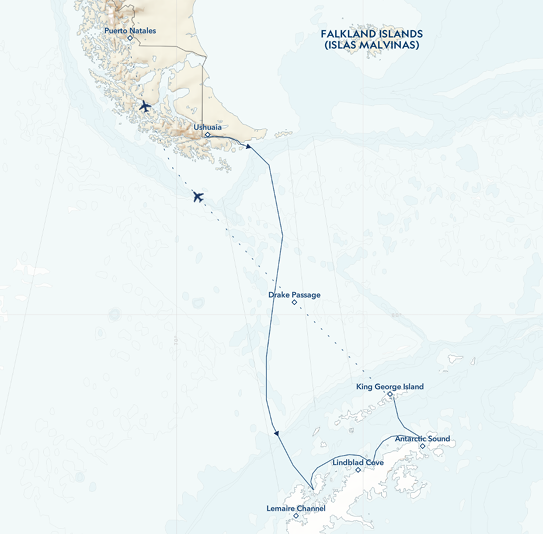Please click "Prices and Departures" above for departure dates, cabin types and prices.
The North Spitsbergen Basecamp cruise offers you a myriad of ways to explore and enjoy this Arctic Region. This expedition allows you to hike, snowshoe, kayak, and learn to take perfect pictures of the polar flora and fauna.
Day 1: Largest town, biggest island
You touch down in Longyearbyen, the administrative center of Spitsbergen, the largest island of the Svalbard archipelago. Enjoy strolling around this former mining town, whose parish church and Svalbard Museum make for fascinating attractions. Though the countryside appears stark, more than a hundred species of plant have been recorded in it. In the early evening the ship sails out of Isfjorden, where you might spot the first minke whale of your voyage.
Day 2: Kongsfjorden and Blomstrandhalvøya
On the first day of our activity program, we will slowly ease into things. Blomstrandhalvøya is located on the northern side of the fjord, which will offer shelter and room to change plan in case the weather changes. In the afternoon, you visit Ny Ålesund, one of the northernmost settlements on Earth. Once a mining village served by the world’s most northerly railway – you can still see its tracks – Ny Ålesund is now a research center.
Close to the community is a breeding ground for barnacle geese, pink-footed geese, and Arctic terns. And if you’re interested in the history of Arctic exploration, visit the anchoring mast used by polar explorers Amundsen and Nobile in their airships, Norge (1926) and Italia (1928). In the evening, we head north along the west coast and spend the night in the sheltered surroundings of Krossfjorden.
Day 3: Exploring the North West
Next to our activities, we will next head toward Amsterdamoya, where you have the chance to hike past the remains of a 17th-century whaling station. You can also enjoy the beautiful panorama of Smeerenburgsleta. In the afternoon, we make for the islands around Fair Haven.
Day 4: Rugged Raudfjorden
At Raudfjorden, on the north coast of Spitsbergen, you can take in an expansive fjord spilling with glaciers – and maybe even visited by ringed and bearded seals. The cliffs and shoreline of this fjord also support thriving seabird colonies, rich vegetation, and the possibility of polar bears. Here we will find the right balance between safe activities and wildlilfe watching.
Day 5: The stunning sights of Liefdefjorden
Depending on the weather, you could sail into Liefdefjorden and cruise within sight of the 5-kilometer-long (3.1 miles) face of Monaco Glacier. The waters in front of this glacier are a favorite feeding spot for thousands of kittiwakes, and the base of the ice is a popular polar bear hunting ground. If ice conditions prevent sailing here early in the season, we may use an alternate route along the west coast of Spitsbergen. Near the area of Texas Bar and Hornbaekpollen, there are also some great hikes.
Day 6: North Spitsbergen splendors
This is our reserve day for activities around North Spitsbergen. Weather and wildlife permitting, we will choose the right location for another day of splendid outdoor adventures.
Day 7: Forlandsundet or St. Johns Fjord
Forlandsundet, between the main island of Spitsbergen and the narrow Prins Karls Forland, is a place of great beauty and fascinating wildlife. Walruses sometimes haul out here, and seabirds can be found around Fuglehuken. You may also see walrus populations around Sarstangen and Poolepynten. Alternatively, we might sail into St. Johns Fjord or south to the mouth of Isfjorden, landing at Alkhornet. Seabirds nest on these cliffs, Arctic foxes search below for fallen eggs and chicks, and reindeer graze the sparse vegetation. We will arrive in Longyearbyen later that night.
Day 8: There and back again
Every adventure, no matter how grand, must eventually come to an end. You disembark in Longyearbyen, taking home memories that will accompany you wherever your next adventure lies.
PLEASE NOTE: All itineraries are for guidance only. Programs may vary depending on ice, weather, and wildlife conditions. Landings are subject to site availabilities, permissions, and environmental concerns per AECO regulations. Official sailing plans and landing slots are scheduled with AECO prior to the start of the season, but the expedition leader determines the final plan. Flexibility is paramount for expedition cruises. The average cruising speed of our vessel is 10.5 knots.
































